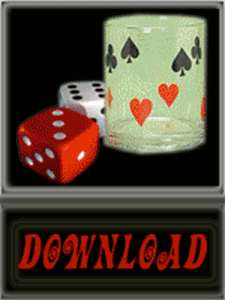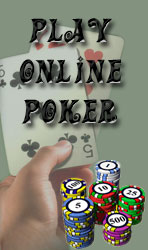Pokerwiner.com → Lessons of poker
READING HANDS ON THE BASIS OF YOUR OPPONENTS’ PLAY AND EXPOSED CARDS
There are two universally applicable techniques for reading hands in all poker games and one more for open-handed games like seven card stud, razz, and holdem.
Most commonly you analyze the meaning of an opponent‘s check, bet, or raise, and in open-handed games you look at his exposed cards and try to judge from them what his entire hand might be.
You then combine the plays he has made throughout the hand with his exposed cards and come to a determination about his most likely hand.
Here is a simple problem in reading hands that should make this point clear.
The game is seven card stud, and your opponents are decent players:







Player A







Player B







Player C







You
Player A with the pair of aces showing bets; Player B with the pair of kings showing calls; and Player C with the pair of queens showing calls. There are no raises. You are last to act. How should you play your three 7s?
If you combine what you see on board with what your opponent have done, there should be no doubt in you mind that you must fold; your three 7s have no chance whatsoever.
The crucial factor is that the pair of queens overcalled.
Player A may be betting with aces along. But when Player B calls him, Player B must have at least kings up.
Being a decent poker player, Player C knows this. Therefore, c could not call without having kings up beat.
What are C’s possible hands? Well, c cannot have aces and queens or kings and queens because there’s a third ace and a third king out, making it impossible for C to have two of either.
So, he must have three queens or better, and while your three 7s might beat the first two hands, they cannot beat C’s three queens or better. Therefore, you fold.
Here is a good example of this kind of hand reading, which to my chagrin cost me half a pot. I was playing five-card stud high-low split with a replace on the end.
With an ace and an 8 showing, I called the maximum raises on third street even though two other players each had a 6 and a 5 showing.
There was another player in the pot odds with an obvious pair of kings. When it got down to the last
card, I had A, 8 ,6, 3 showing.
One 6,5 had folded, but despite the strength of my board, the other stayed with a ragged 6, 5, 10,Q showing. And of course, the pair of kings stayed.
Now I was betting and raising, hoping the Q,10 low would get out. But that player read me too well. He didn’t even take the opportunity to replace one of his cards.



